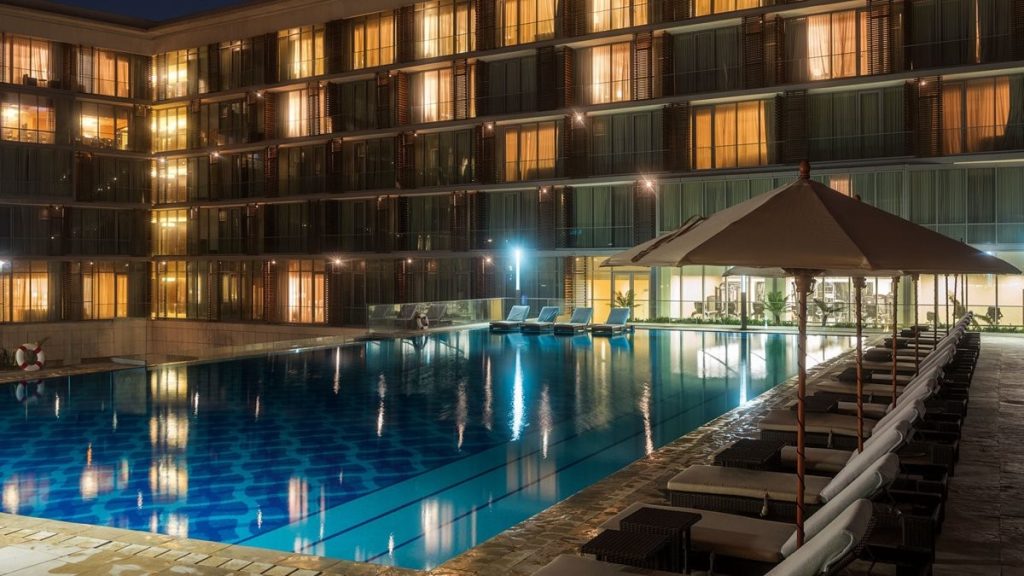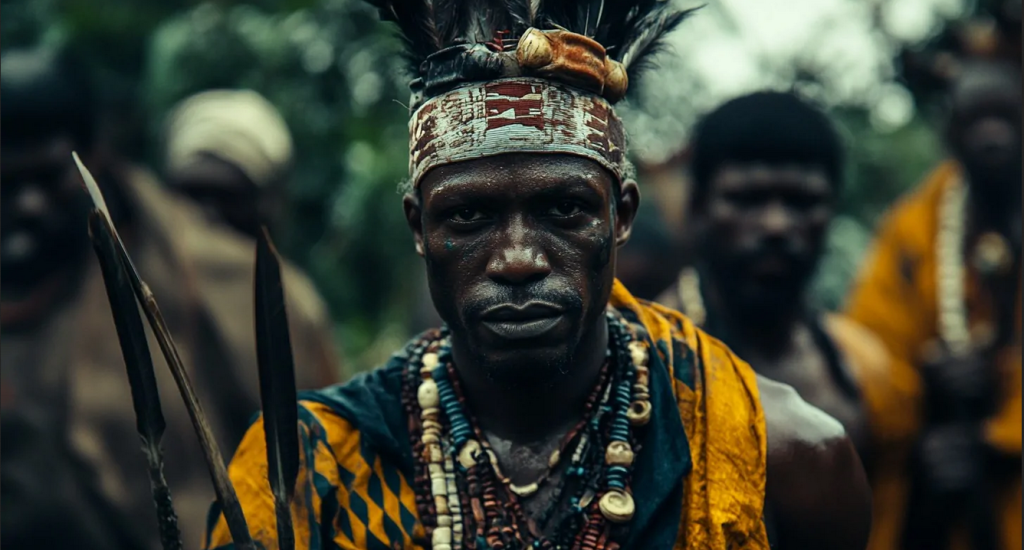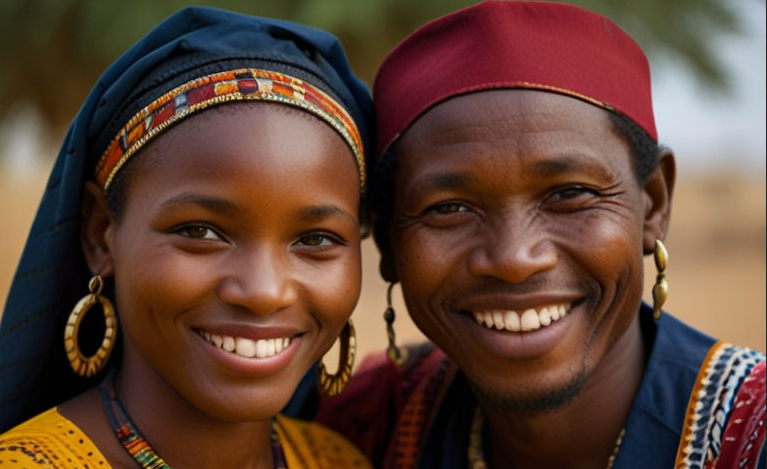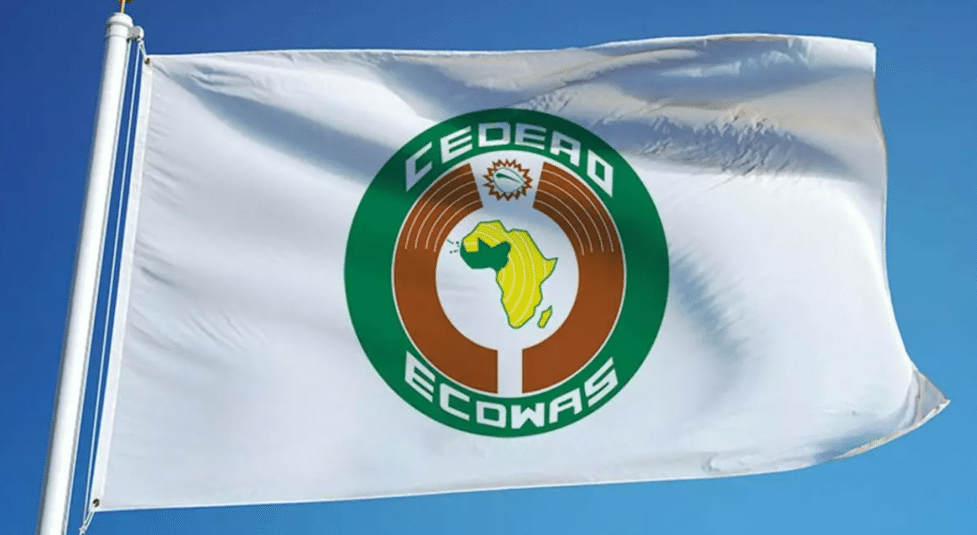Mali is a cultural hub located in the heart of West Africa known for its diverse ethnic groups, unique blend of customs and traditions, and vibrant cuisine and festivities. The country’s rich and diverse culture is rooted in an age-old history. The region that now includes the Republic of Mali was the cradle of remarkable civilizations, whose reputation was widely known beyond the African continent. For at least a thousand years, the country has been traversed north to south, east to west by individuals ferrying a wide variety of goods, beliefs, and ideas.
Today, an estimated fourteen ethnic groups reside in the region, each with its own unique cultural traditions. The Moors (Maures) and Tuaregs are in the Sahelian and Saharan zones to the north. The Boso (Bozo), Fulani (Peuls), and Sonrai are located along the Niger River. The south is also occupied by a multitude of ethnic groups, including the Dogon, Khassonké, Minianka, Senufo, Bwa, Soninké, Malinké, and Bambara (Bamanan), to name a few. An exceptional cultural and linguistic diversity exists in Mali as a result of this ethnic diversity. Each ethnic community is unique in different aspects of life, including cuisine, dressing, arts and crafts, architecture, as well as social and religious customs.
In this article, we will explore how Mali’s unique blend of customs and traditions is depicted in the different flavors, festivities, and holidays that define Malian culture.
Malian Cuisine
Malian cuisine serves as a distinct reflection of the country’s cultural diversity and rich culinary traditions drawing inspiration from the numerous ethnic groups that call Mali home. The nation’s rich food culture is rooted in a deep appreciation for local ingredients, such as maize, rice, sorghum, and millet, and varies from region to region due to different cultural groups. Some of the must-try foods that embody Mali’s rich cooking traditions are mentioned below:
1. To (Tuwo or Tô)

To is a staple dish in Mali that tends to exemplify a communal experience. Often likened to a thick porridge, To is traditionally made with sorghum, millet, or corn flour, thus serving as a good source of carbohydrates. To is typically served in a large bowl from which everyone eats, promoting a social and communal experience. This dish is usually eaten with hands and served with stews or sauces that feature meat and vegetables.
2. Tiga Dèguè (Peanut Sauce)
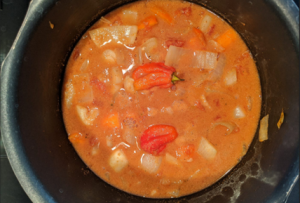
Tiga Dèguè is a smooth, creamy sauce made from groundnut paste and usually contains onions, tomatoes, garlic, and in some cases, various vegetables such as okra and sweet potato. In most cases, this peanut sauce comprises meat or fish, serving as a rich source of protein. Tiga Dèguè is commonly served with To or rice.
3. Bouillie
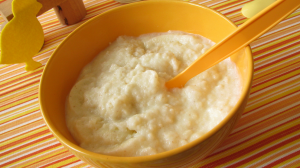
Bouillie is a popular breakfast dish in Mali that often resembles a runny porridge or custard. Made with sorghum, millet, or rice flour, Bouillie is a dish enjoyed by children and adults alike and serves as a great start to the day. Bouillie is often sweetened sugar and sometimes flavored with nuts or fruits.
4. Foutou (Banana and Yam Mash)
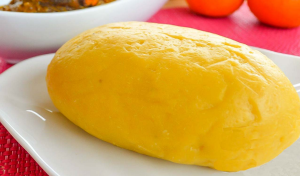
Foutou is a remarkable dish comprising mashed yams or plantains (or sometimes a combination of both). Foutou is typically handmade, where plantains or yams are boiled until tender and then pounded into a paste. The paste is then shaped into balls before being served alongside various stews.
5. Somè (Sorghum Beer)
Somè is a traditional Malian beverage made from fermented sorghum. The beverage is mildly alcoholic and is usually a staple in various social gatherings and events, providing a glimpse into Mali’s local drinking customs. To the communities, Somè is not just a drink, it is a symbol of hospitality and harmony.
Festivals and holidays
Malian festivals and holidays are a testament to the nation’s rich cultural diversity and sense of tradition. Rooted in centuries-old customs, these celebrations highlight the unique traditions and beliefs of different ethnic groups, whether they are historical commemorations, agricultural festivities, or religious observances.
1. Gouin Festival
The Gouin Festival is a three-day festival that is normally held in January around the region of Gouina between Kayes and Bafoulabé. The celebration features jazz and Goumbé musical performers alongside several Kayes dance groups, and lively appearances by local wildlife, including monkeys and hippos. The event also includes craft workshops, walks along the Senegal River past the waterfalls, and boat races. The festival is dawned by an abundance of dancing, music, art shows, crafts, and puppets.
2. Festival au Désert (Festival in the Desert)
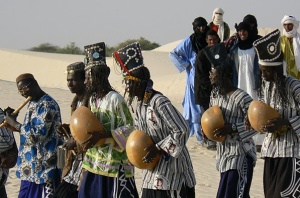
Festival au Désert is an internationally renowned music festival that initially occurred in the Sahara near Timbuktu. The event showcases the culture and music of Mali, particularly that of the Tuareg people. The festival features performances of traditional and modern music by Malian artists, as well as craft displays, camel races, and discussions on cultural preservation.
3. Segou’ Art (Festival sur le Niger)
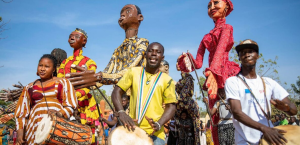
Segou’ Art is a major cultural and art festival held annually in Ségou, along the Niger River. It’s one of Mali’s largest artistic gatherings. The festival brings together musicians, dancers, artists, and craftsmen from across the nation and beyond to celebrate Malian art and culture. The festival includes traditional music performances, art exhibitions, and boat races on the Niger River.
4. Dogon Mask Festival (Dama)
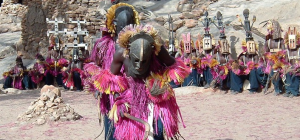
The Dogon Mask Festival is a cultural and spiritual event celebrated by the Dogon people of Mali. It is a sacred ritual that marks the end of mourning periods and honors the spirits of the deceased. The festival features elaborate mask dances, where dancers wear intricate wooden masks that represent various animals and spirits.
5. Bogolan Festival
The Bogolan Festival is an event that celebrates Malian textiles, particularly bogolan (mudcloth). Bogola is considered a significant part of Malian cultural identity. The festival includes exhibitions, fashion shows, and workshops focused on the ancient techniques of creating bogolan. It showcases the creative talents of Malian artisans and highlights the importance of preserving traditional crafts.
In Mali, different ethnic groups have their own unique festivals and cultural traditions, from the vibrant Dogon mask dances to the Bogolan Festival. These celebrations symbolize the diverse heritage of Mali’s many ethnic communities. However, despite these cultural differences, Muslim holidays unite the nation, as the majority of Malians practice Islam. Malians observe these Islamic holidays with shared customs, such as wearing new or special clothes, preparing elaborate meals, and giving alms to the less fortunate. Holidays like Eid al-Fitr and Eid al-Adha (Tabaski) bring together people from all ethnic backgrounds in joyous communal celebrations, emphasizing the shared faith that binds Mali’s diverse population.
References
ETIC Hotels (n.d.). 10 Best Foods You Must Try In Mali. https://etichotels.com/journal/10-best-foods-you-must-try-in-mali/
iExplore, (n.d.). Mali Holidays and Festivals. https://www.iexplore.com/articles/travel-guides/africa/mali/festivals-and-events
Illsley L. C. (2019). The Culture Of Mali. WorldAtlas. https://www.worldatlas.com/articles/the-culture-of-mali.html

